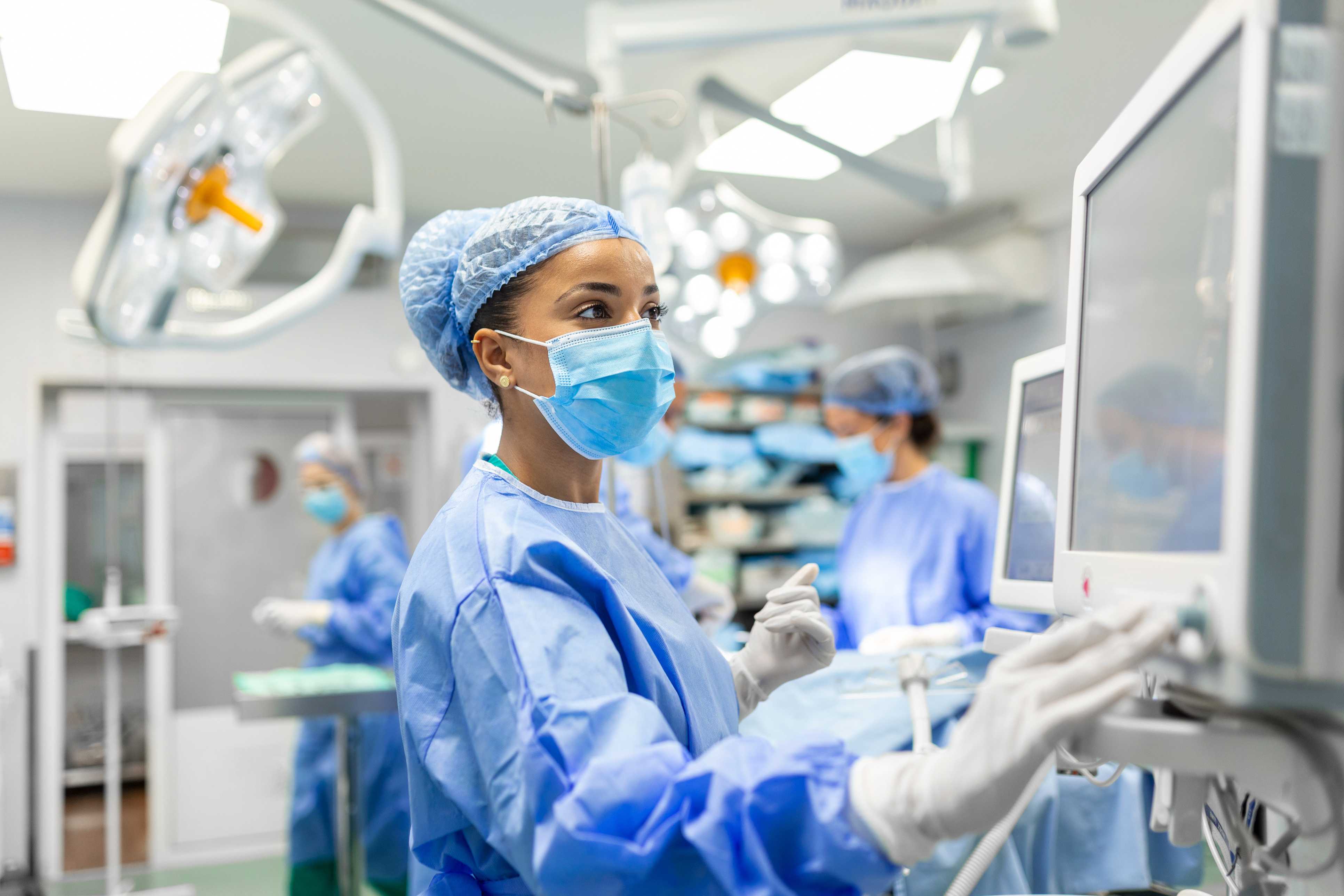Nurses’ Perspective on Packaging in the Hospital
Medical devices, pharmaceuticals, and diagnostic products can quickly become compromised if the packaging is not opened properly. To avoid contamination of the product across all hospital care settings, it’s essential for the packaging to be intuitive and designed with aseptic presentation in mind. As packaging providers, we continually look for ways to best design the packaging for the end user. One way we do this is through conversations with nurses, doctors, and caretakers about how the packaging is used and how it can influence the user experience.
Recently, I interviewed three nurses based in Grand Rapids, Michigan, each from various hospital departments to discuss their interactions with healthcare packaging. These interviews aimed to understand how the packaging and presentation of products changed based on the nurse’s department.

Gracyn: Tell me about your current role.
Riley Bosanic: I’m an MSN and work on the geriatric floor at a hospital. This is a general floor, where all patients are over 65. Because the job is focused on patient care management, my skills allow me to be easily transferred to other general units in the hospital if necessary.
Trinity Horne: I’m an RN in the labor and delivery unit, so I get to help bring babies into the world! It’s considered a specialized unit due to the specific patient needs and the specialized focus I’m required to have and maintain. For example, for my floor specifically, I had to finish a fetal monitoring certification.
Ben Chafin: I’m an RN. I work in the intensive care unit (ICU), also considered a specialized unit, because it works with people who need dedicated attention.
Gracyn: What are some typical procedures you see in your unit?
Riley: My job is centered around patient care management, so I do a lot of pain management and wound care, which means I tend to work with a lot of pharmaceuticals and medical devices. I regularly administer medication, either through a pill or syringe, and also do a lot of catheters. Because my floor is more about managing the patient's care, we don’t often do specialized procedures.
Trinity: My procedures are mainly vaginal births and C-sections. However, I come across other various procedures based on the mother and baby's needs. This can be things such as episiotomy or breaking the patient’s water.
Ben: We perform many procedures in the ICU. Some examples include arterial lines, central lines, Foley catheters, as well as intubation.
Gracyn: What type of packaging do you typically see used for these procedures?
Riley: Most of what I encounter is a basic pouch that you peel open or a kit that comes in a plastic tray with a paper lid. Catheters often come in a plastic tray with clips, whereas sterile needles are in foil packaging. I would say I come in contact with most of these during every shift.
Trinity: Our products usually come in a kit based on the procedure. We have vaginal delivery trays and C-section trays, which are just your typical trays with a paper lid, but they hold everything we need, so they can be pretty large. Then, the kit is covered in a pouch. If we need anything extra that’s not in our kits, it usually comes in a plastic pouch.
Ben: Given the nature of the ICU patients, we do many procedures right in the room. So, I encounter a lot of sterile dressing. Also, because we do a lot of immediate procedures and there’s a sense of urgency on the floor, we work with many kits, so everything is there when we need it. The kits are a tray with a paper lid, all within a pouch. Sometimes, our suture kits come in card form, but this is uncommon. The difference, specifically for sutures in a card or a tray, is almost always based on the doctor's preference.
Gracyn: What are some specific challenges you encounter? How has packaging influenced these challenges?
Riley: Any challenges revolve around emergencies. When we must move fast, it’s easier to cross the sterile field, thus compromising it. The challenge typically comes from the situation, not the packaging.
Trinity: Issues could arise during emergency C-sections, and that’s mostly because we have limited time to situate everything. Whether a sterile glove is dropped in the field or if a needle pierces it, we must start over or sterilize the person affected. Even though it can be time-consuming, we know it’s important and I haven’t seen any situation where patient safety is jeopardized.
It’s also about the size of the space. We often work with large kits in a small space, which creates more opportunities for the sterile field to be compromised. So, it’s essential to ensure the packaging size is only what’s necessary and nothing else.
Ben: The sterile field is rarely compromised. However, given that there are many emergencies in the ICU, the faster we move, the more people in the room, the more likely it is to be compromised. I’ve never felt or thought about the package causing us issues. The most influential component of the packaging is efficiency. If it does exactly what it needs while taking up as little space as possible, it’s a good package.
Gracyn: What procedures are put into place to ensure aseptic presentation? Does this change based on the unit you’re in?
Riley: We learned an aseptic presentation standard when we were in school and frequently take a nurse residency course to refresh our knowledge. But everything follows a standard, no matter what unit.
Trinity: Our standard is to open the package away from you, pass the device or therapy to a sterile person, or drop it into the sterile field. We are usually about a foot above the field if we're dropping a device. This is important because if I’m too close, I’ll compromise the field; if I’m too far, I could compromise the device. The main idea is to move as little as possible with the device when it’s out of the sterile packaging. So, we usually don’t open the package until necessary.
Ben: I don’t see differences in presentation based on the unit. Aseptic presentation is necessary for every procedure. As a rule of thumb, we learned that the sterile field is like lava. No one should touch it unless you can touch the lava. We think of three things: never turn our back, never drop our hands, and always stay present, facing the patient.
Gracyn: If you could change anything about the packaging you work with, what would it be?
Riley: When I think about packaging, I think about storage. For example, finding a needle of a specific size can be challenging when there are so many. It can waste time. I would suggest some differentiator within the printing on the packaging, something like a color to code it.
Also, because I work with many pharmaceuticals, that packaging can be difficult to open. The plastic can be tough, and we often must use scissors to open it. I noticed that the packaging with tear notches is much more user-friendly.
Trinity: I always struggle with the clips on the catheters. I could see where different holders could be beneficial here.
Ben: We have kits for specific procedures, and I’ve noticed they’ve started to keep the suture kits separate. I would keep those within the kits. Everything in one place allows clear margins for the sterile field and makes us as efficient as possible.
It may come as no surprise that despite their differences in healthcare settings, the three nurses agreed that efficiency and patient safety are the most critical components of any medical procedure, even down to the packaging.
Hear from more nurses and their perspectives on packaging by watching this video series:



